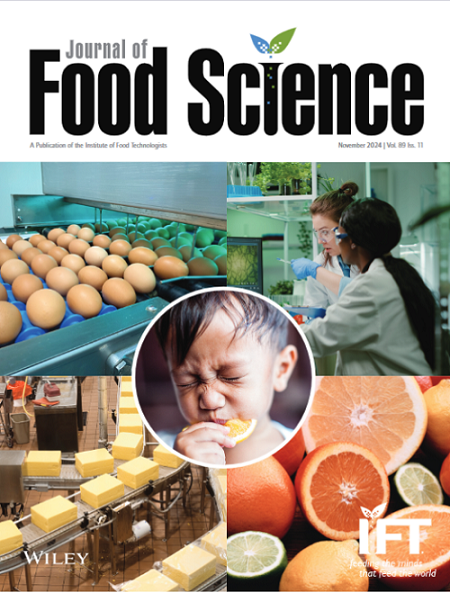Ovotransferrin Fibrils Formed by Peptides Self-Assembly Improve the Stability and Antioxidation of Quercetin and Their Application in Quercetin Fortified Soybean Milk
Abstract
ABSTRACT
Quercetin (Que) is a natural flavonoid compound with multiple biological functions. However, it is easily dissociated by external conditions and difficult to apply in the food industry, so it needs to be encapsulated with food-derived nanocarriers to improve its stability. Here, ovotransferrin (OVT) is hydrolyzed into peptides by subtilisin A, and then the peptides self-assemble into hollow nanofibrils under Ca2+ ion induction at 50°C and pH 7.5 for 1 h. The increase in Thioflavin T (ThT) fluorescence intensity confirms the continuous growth of OVT fibrils by β-sheet stacking. The mature OVT fibrils have a length of 1–2 µm and a diameter of 10 nm. In addition, the increase in G′ reflects the enhanced stiffness or deformation resistance of OVT fibrils. As nanocarriers, OVT fibrils successfully encapsulate Que with a maximum loading rate of (7.41 ± 0.36)% by hydrophobic interaction. OVT fibrils improve the chemical stability and antioxidant property of Que. Further, we developed a novel Que-fortified soybean milk drink by adding Que-loaded OVT fibrils into soybean milk in a volume ratio of 1:5. OVT fibrils improve the stability and viscosity of Que-fortified soybean milk drink. By sensory evaluation, OVT fibrils can play an important role in masking the odor of Que and protecting its color. This work protects Que from degradation through nanoencapsulation technology, while endowing soybean milk with antioxidant, anti-inflammatory, and other effects, providing a new strategy for the development of protein drinks with nutritional enhancement and health effects.
Practical Applications
This study used food grade nanomaterials encapsulation technology to improve the stability and antioxidant properties of Que, and added them to soybean milk to enhance the nutritional and health benefits of soybean milk.





 求助内容:
求助内容: 应助结果提醒方式:
应助结果提醒方式:


